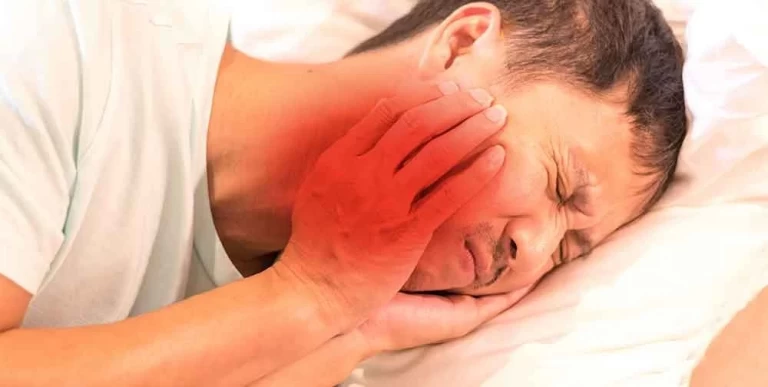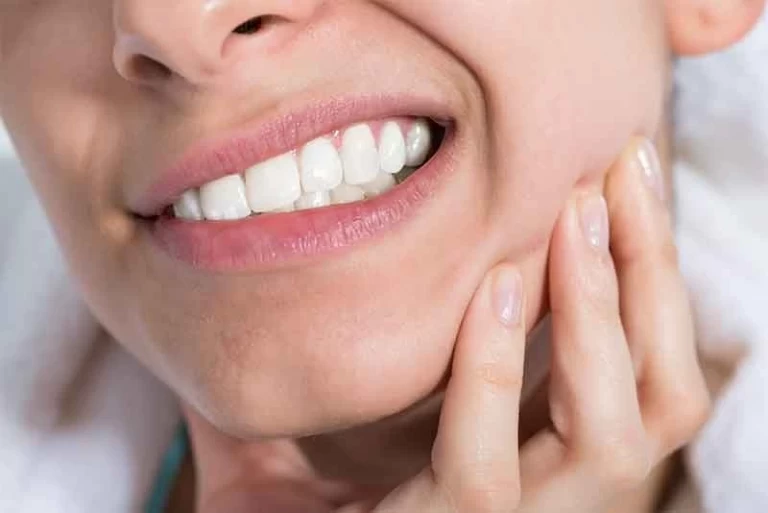
One of the most common symptoms that results from upper cervical spine injury is TMD. The ear, neck and jaw are intimately connected by a complex set of muscles and nerve pathways. Many who have neck pain also suffer from TMD. The muscles that preform chewing, known as the muscles of mastication, are controlled by the fifth cranial nerve, the trigeminal nerve. The nucleus, or brain of this nerve, is located inside of the brainstem. The brainstem is the seat of almost all autonomic functions in the body and is protected by the first and second cervical vertebrae. As a consequence, any misalignment of the top two bones in the neck can lead to TMD issues.
In our Pleasanton based Blair upper cervical health offices we find that 1/3 of all of our new patients suffer from TMD. Because neck injuries are highly correlated with TMD it should not be surprising. In this article we will discuss the plethora of symptoms that are commonly associated with neck injury and TMD. We will also explain how neck injury can lead to these types of health issues and then offer a natural noninvasive treatment that can help you recovery naturally from these health issues.
Why The Head Neck Junction Is Vital to Your Health
The head weighs an average of 10-12 pounds and rests on the top vertebrae in the neck named the atlas, which weighs two ounces. As a consequence, the head neck junction is vulnerable to spinal misalignment that results from whiplash type trauma. Because the upper neck houses the brainstem, misalignments in the upper neck can lead to a host of chronic health issues.
Blair Upper Cervical doctors are well trained specialists who have one goal, restoring normal motion to the upper cervical spine to normalize nervous system function. In doing so, many people who have chronic health issues find their health issues resolve over time.
Symptoms Commonly Associated with
Clicking or Popping of the Jaw
People who suffer from TMD commonly have clicking or popping of the jaw. This occurs because the TMJ no longer fits symmetrical due to imbalances in the mastication muscles. This imbalance can lead to grinding and clenching of the jaw. In severe cases of tmj misalignment the person can experience what is known as lock jaw.
Earaches and TMD
Earaches are not only caused by ear infections. In fact, chronic ear pain is highly associated with tight upper cervical spine muscles. The ear has many different muscles that interplay with the scalp, the tmj, and the facial muscles. When the upper cervical spine is injured it leads to imbalanced musculature in the neck, face, head, and commonly leads to chronic ear and jaw pain.
Neck Aches
Neck pain can be associated with many different causes. However, by far and away the most common cause of neck pain is chronic tight cervical spine muscles. What causes neck muscles to be chronically tight? When the joints in the neck move normally it fires the cervical spine muscles normally. However, when injury occurs to the ligaments and soft tissues surrounding the neck joints it leads to loss of motion which causes chronically tight and imbalanced neck muscles.
Headaches
TMD sufferers often have chronic headaches, especially headaches which are located near the temples and forehead. Headaches associated with TMD result from temporalis muscle tightness. The temporalis muscle is a fan like muscle that spans the lateral side of the head and inserts into the tmj. TMD is partly due to this muscles chronic tightness and is often at the root of temple type headaches. As we have regularly discussed muscle imbalance and tightness has its root cause in loss of cervical spine joint motion and is helped with Blair Upper Cervical care.
Neck Pain
Neck pain is a huge deal in this world. It is estimated that approximately 50 percent of the population suffers from chronic neck pain. (1) Interestingly, 88 percent of people who have TMD also suffer with neck pain. (2) and both TMD and neck pain can have their root cause in upper cervical spine injury.
Difficulty Chewing
It shouldn’t be surprising that those who suffer with TMD also commonly suffer with difficulty chewing. There are two main reasons that this occurs.
- Imbalances in mastication muscle tone
- Tmj no longer fits properly due to poor jaw alignment resulting from imbalanced mastication muscle tone.
Popping, pain, clicking and grinding are common symptoms associated with jaw misalignment.
Swelling on Side of Face
TMD has many common symptoms, however, some are far less common like swelling on the side of the face. In severe cases of TMD there is such severe misalignment of the TMJ that swelling can not only occur in the joint but can also become severe enough where it affects the face as well.
Tired Feeling in the Face
Constant chronic muscle tightness and spasm leads to fatigue. Many who suffer from TMD issues feel a " tired feeling in their face". As we will talk about in a moment, most of these associated symptoms of TMD can be helped or eliminated by getting precision upper neck corrections to allow the central nervous system to function better. Symptoms are effects. To get well you must get to the cause. In a moment we will discuss what Blair upper cervical care is and how it can help you recover your health!
Pain or Tenderness in Neck, Shoulders, and Around the Ear
Because TMD is a neuro muscular problem, neck, shoulder, and ear pain are common. Unfortunately, in our mechanistic health care system we look at a multitude of symptoms as different conditions to be " treated". Treating effects is a losing game. To get well you must understand what the cause is so you can remove it. Musculoskeletal problems most commonly have their root cause in the spine!
Tinnitus
Anyone who suffered with tinnitus knows that it is a bugger to fix. Tinnitus is one of the most common symptoms that is associated with TMD and we have found the most stubborn to get to go away. In our Pleasanton based upper cervical health care office we find that 1/3 of the cars of tinnitus will clear following a two-month course of Bair upper cervical care. One third improve and one third do not respond. We have talked about the underlying neurological and bio mechanical cause of some tinnitus patients in this article here.
What is Blair Upper Cervical Technique?
Blair Upper Cervical doctors are specially trained to locate spinal misalignments in the upper cervical spine and correct them. Spinal misalignment is located by running a battery of neurological tests that locate the spinal segments that have been injured and misaligned by a prior neck injury.
Once located, precision imaging in the form of digital x-ray or cone-beam computed tomography (Cbct) are used to precisely determine which joint has misaligned and the angulation of the misaligned joint. Each person’s anatomy is different and therefore imaging is used to uncover the blueprint to be used to correct each patient’s individual misalignment pattern.
Once this information is gleaned, a gentle, light correction is made without twisting, popping, or pulling. The patient is then monitored overtime to ensure that the correction is holding. If the testing indicates the need for another correction, then it is performed. However, the goal of Blair Upper Cervical Care is for the patient to stay in “adjustment”.
It isn’t the correction that produces healing. It is the removal of nerve irritation and the adjustment “holding” in its normal position that allows the body to function better and proceed through a healing process. This is how Blair Chiropractic treatment can often help remove the underlying cause of many who suffer from TMD, tinnitus, neck pain, headaches and other chronic health problems by supporting the body in healing itself.







Leave a comment